Should a sofa touch the wall? The one-minute furniture trick that can make even small rooms look bigger
Having your sofa pressed right up against a wall might seem like the best way to maximise your floorplan, but it can make your space actually feel smaller
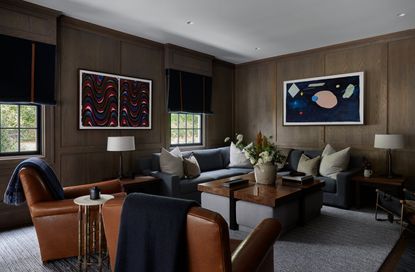

When you live in a small space, it's tempting to do absolutely anything you can that might make the space feel bigger. Paint the walls the brightest of whites, put up the hugest mirror you can find, and push the furniture to the very edges of the room. However, sometimes all this can do is highlight the tiny proportions of a space. Sometimes it pays to do things that seem counterintuitive.
One such trick I've always paid attention to when it comes to small living rooms is that, where possible, there should always be a small gap between your sofa and the wall, even in the most compact of floorplans. I've always thought that by sacrificing a few inches in front of the sofa, you can really trick the eye into thinking the whole room looks bigger than it actually is.
However, in all kinds of rooms, there are plenty of reasons why the sofa shouldn't touch the wall. It can damage the paintwork, for one, which means more regular touch-ups. Plus, if you have all your living room furniture hugging the walls, it doesn't necessarily lend itself to the perfectly proportioned set-up between sofas, chairs, coffee tables and more.
So, whether you're dealing with a small living room with a squashed-in sofa, or you have room to potentially "float" your furniture, here's what you need to know.

Luke is a design writer and blogger who specializes in modern luxury homes and cutting edge design. Here, he shares his sofa trick with us, and gets input from design experts on why it may (or may not) work for your home.
How to float a sofa
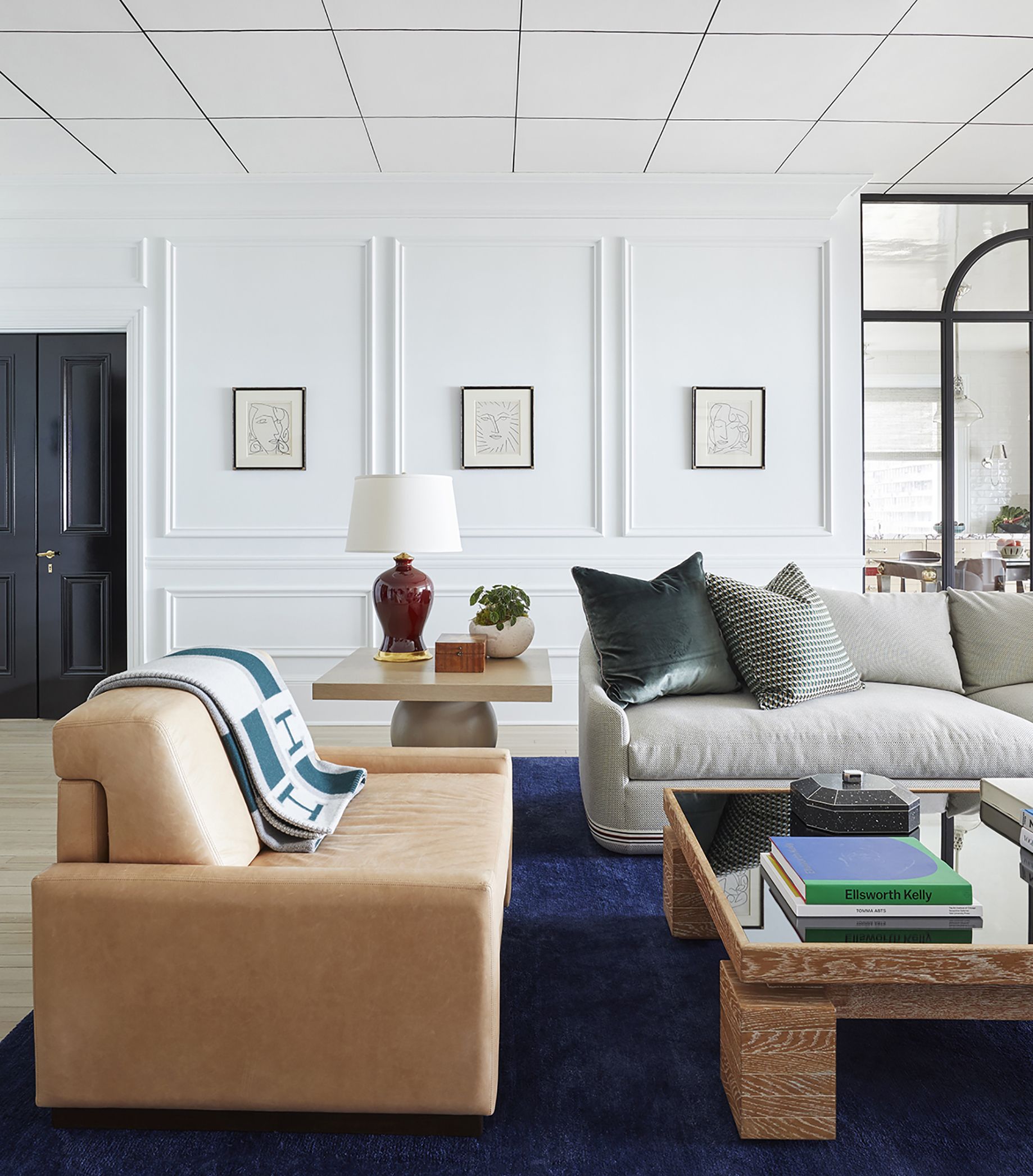
Floating living room furniture is the idea that you create separate zones, not-so-defined by the walls of the room as much as by how to make the best looking and most functional set-up. You see if a lot in large, open-concept homes, but do you have enough space to do it in your own living room?
'As a general rule of thumb, anywhere you intend to have foot traffic needs 36" to 42" of space to pass through comfortably, so if you plan to float your sofa off the wall, make sure you measure and have at least that amount of space between the wall and sofa's back,' suggests interior designer Becky Shea. A good rule to live by.
The result is a living room layout that feels set-up according to how you want to use the space, not necessarily the proportions of the room you have to work with. You should, of course, consider how your room looks from every angle when floating furniture. A couch often doesn't look as good as the back as it does from the front.
What about in a small room?
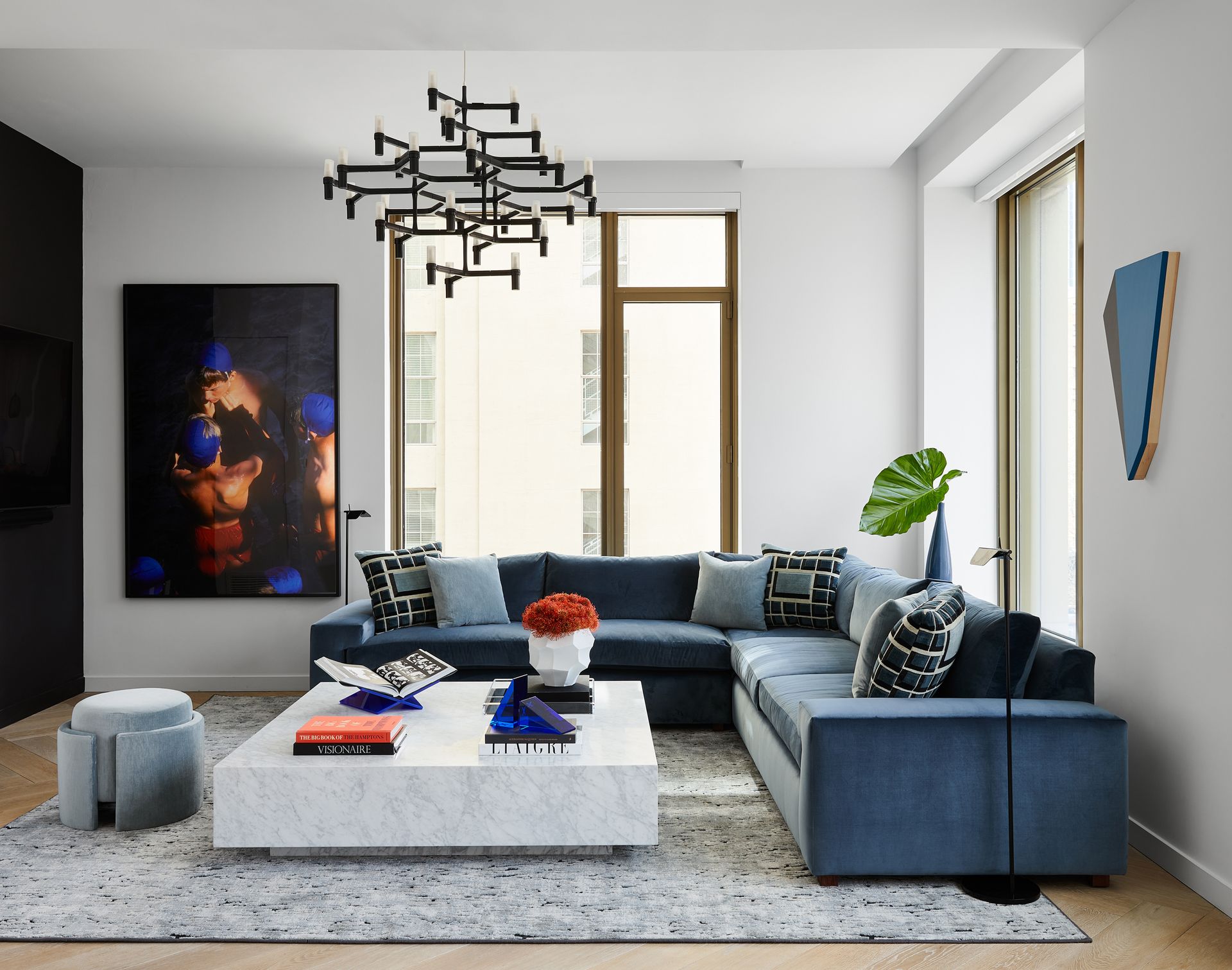
'There should be a small gap at least,' says interior designer Lisa Staton, 'just a few inches is fine, and often the baseboard keeps the sofa forward and stops it from feeling crunched against the wall.'
And that's the idea, really. A small gap between the sofa and the wall creates an effect of depth, a generosity of scale of the room that means all the living room furniture doesn't have to be compressed right against the walls.
However, it's not, necessarily, a tip that every designer swears by. 'Assuming you do not have the space to float your sofa, I recommend going back as far as your room allows,' says Becky Shea. 'If you have plugs you need access to or windows with drapes that fall behind the sofa, give yourself just enough clearance and nothing more. You'll only be making your room feel smaller if you pull it off further than is needed without going full-on "float".'
Not every sofa needs it, either. If your sofa has a curved or slanted back, it can still create this effect without being pulled forward, however, modern, boxy living room sectionals might feel a little flatter when pushed against the wall.
The best way to see how you feel about it is to try it out, and fortunately, it only takes two pairs of hands and one minute to see what maneuvering your sofa a few inches out from the wall looks like.
However, if you do decide you like the look of sofa not touching the wall, ensuring it stays in a fixed place when you've got a household full of people sitting on it each day is a different story, yet not unachievable...
How do I stop my sofa touching the walls?
Sofas aren't fixed to the floor, so even with the best footpads on your couch, there's usually a little slippage as you use your living room sofa. When your sofa is touching the wall, this can stop this movement - however, now you've decided to create a gap between the two, how do you maintain it?
Fortunately, there are some clever ideas designers swear by. Here are three of my favorites.
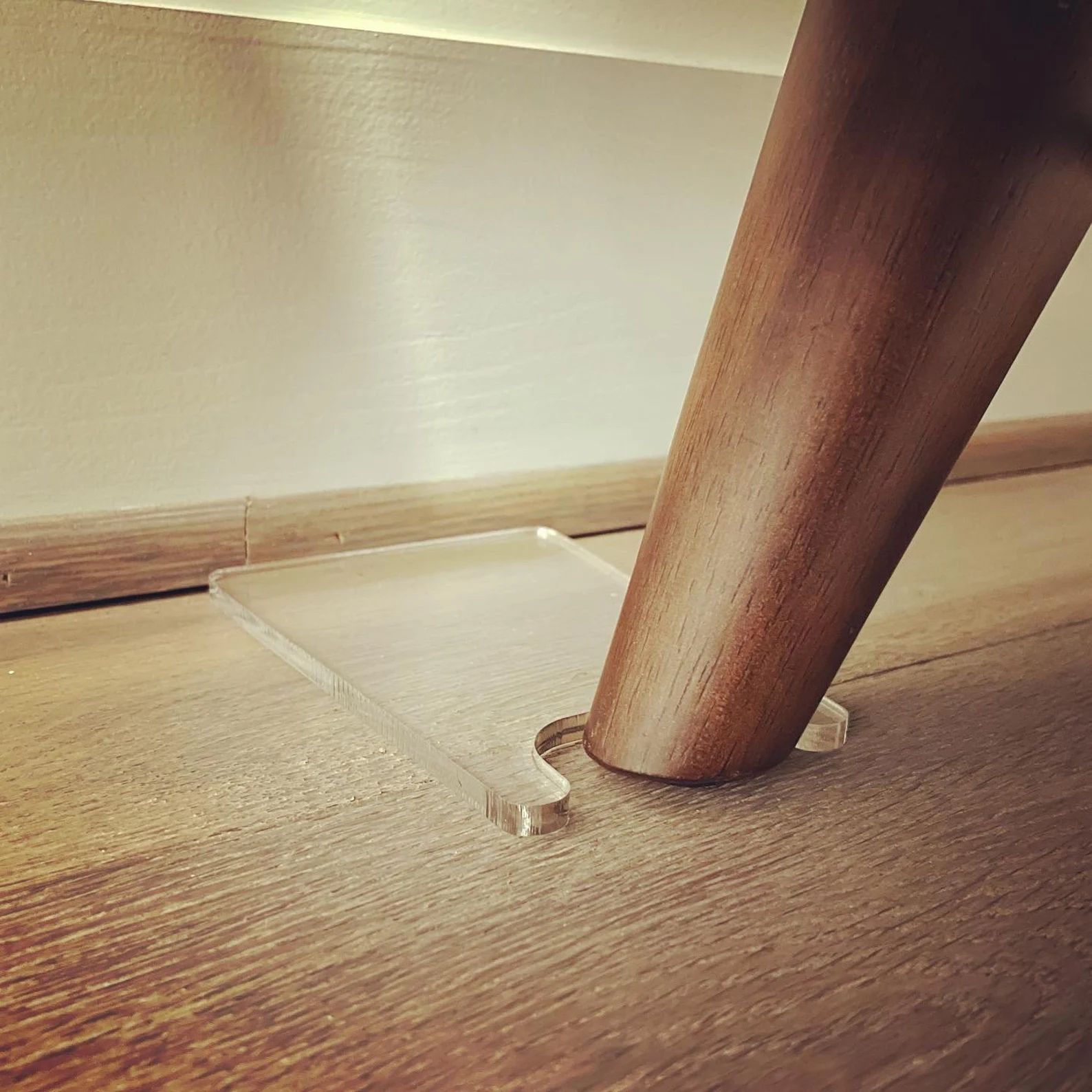
Made from acrylic, these stoppers fit your sofa legs, ensuring it doesn't touch the wall, while remaining unseen too.
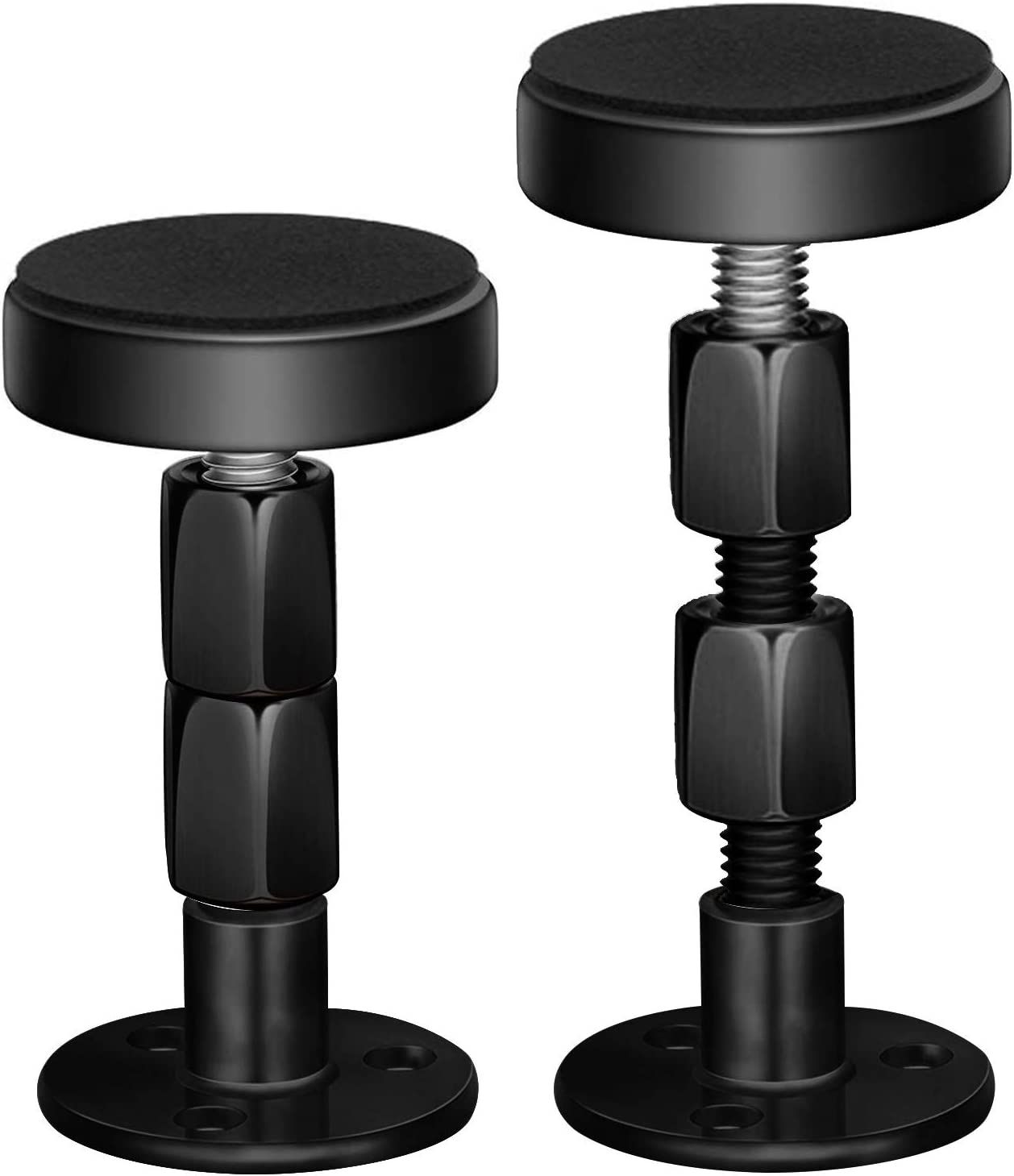
These adjustable, budget-friendly stoppers can be used behind couches and headboards.

These fabric bumpers won't damage your wall or your couch.
Be The First To Know
The Livingetc newsletter is your shortcut to the now and the next in home design. Subscribe today to receive a stunning free 200-page book of the best homes from around the world.

Luke Arthur Wells is a freelance design writer, award-winning interiors blogger and stylist, known for neutral, textural spaces with a luxury twist. He's worked with some of the UK's top design brands, counting the likes of Tom Dixon Studio as regular collaborators and his work has been featured in print and online in publications ranging from Domino Magazine to The Sunday Times. He's a hands-on type of interiors expert too, contributing practical renovation advice and DIY tutorials to a number of magazines, as well as to his own readers and followers via his blog and social media. He might currently be renovating a small Victorian house in England, but he dreams of light, spacious, neutral homes on the West Coast.
-
 The 12 Best Table Lamps for Reading —I'm a Certified Bookworm (and Shopping Expert)
The 12 Best Table Lamps for Reading —I'm a Certified Bookworm (and Shopping Expert)When it comes to table lamps for reading, I don't mess around. If you're the same, this edit is for YOU (and your books, or course — and good recommendations?)
By Brigid Kennedy Published
-
 "It's Scandi Meets Californian-Cool" — The New Anthro Collab With Katie Hodges Hits Just the Right Style Note
"It's Scandi Meets Californian-Cool" — The New Anthro Collab With Katie Hodges Hits Just the Right Style NoteThe LA-based interior designer merges coastal cool with Scandinavian simplicity for a delightfully lived-in collection of elevated home furnishings
By Julia Demer Published

